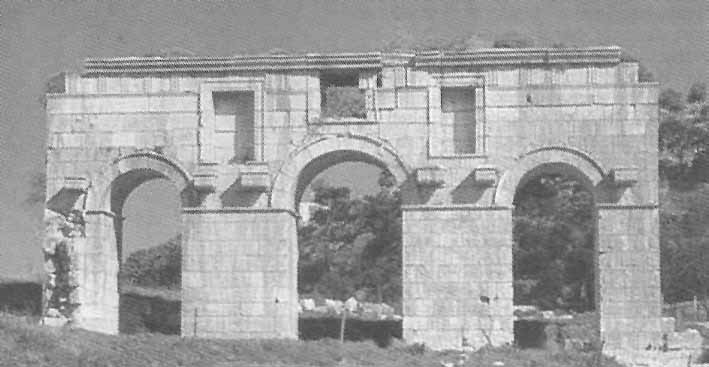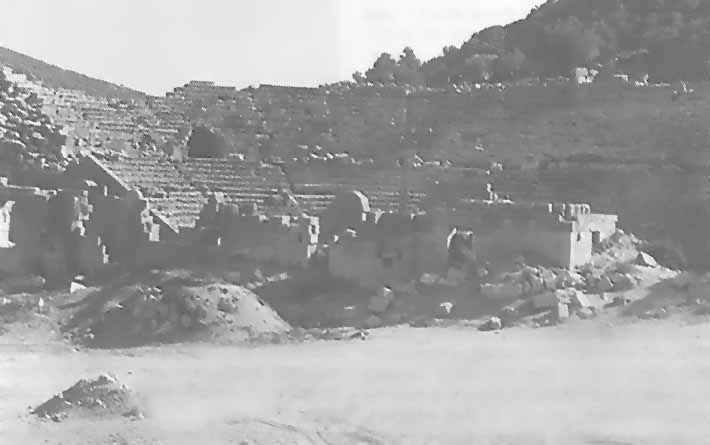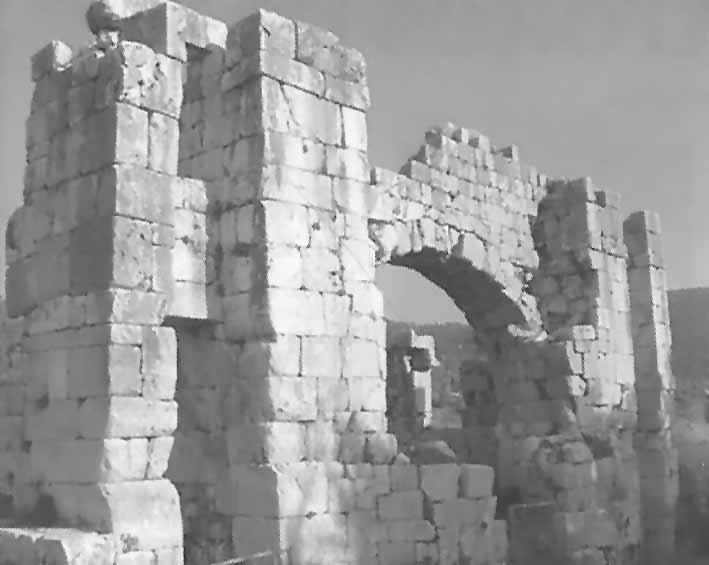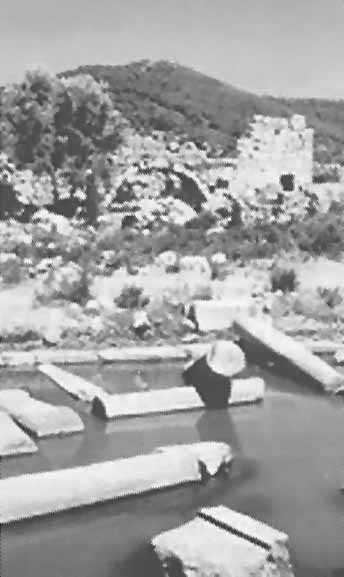 |
|
|
PATARA JOURNAL A Congress, Buried in the Sand, Greek-American Review |
|
| Alexander the Great was here, and so was Saint Paul, on his way to Ephesus. Centuries later, the drafters of the American Constitution took the ancient Lycian League, which was based here, as an early example - in fact, it was history's earliest example - of the form of republican government they envisaged as well. The Lycian League was mentioned twice in the Federalist Papers, once by Alexander Hamilton, once by James Madison, so it could safely be said that it entered into the history of the formation of the United States. |
 Gates of Patara |
|
Now, after centuries of neglect, teams of Turkish and German archaeologists have been working under the hot sun of this small Mediterranean seacoast town, uncovering some of its treasures. Among them, liberated from the many hundreds of truckloads of sand that covered it, is the actual parliament building where the elected representatives of the Lycian League met. It has rows of stone seats arranged in a semicircle, the same arrangement used in the chambers of the American Congress. Its stone-vaulted main entrances are intact, and so is the thronelike perch where the elected Lyciarch, the effective president of the League, sat. |
|
 Pataran Coliseum |
The discovery has excited the archaeologists, and some others as well. |
|
Like a few hundred other foreigners who are attracted to this relatively undiscovered spot of turquoise waters, rocky coves and cerulean skies, Mr. Solarz and his wife, Nina, built a house in town nearby and spend a couple of months of the year there. They have become informal patrons of the archaeological project, and hope to persuade the United States Congress to sponsor a celebration here in 2007, the 220th anniversary of the framing of the American Constitution. But other things make Patara important besides the inadvertent role it played in the creation of the United States. It is often said of Turkey that it has more Greek ruins than Greece. But Patara is a Greek ruin, a Roman one and a Byzantine one as well, which is what makes the site, buried in sand for centuries, an important newcomer to the Turkish archaeological scene, likely to take its place alongside Troy, Pergamon or Ephesus as one of the most important ones. |
|
 Patara Ampitheatre |
"It's very exciting," said Fahri Isik, a professor of archaeology from Akdeniz University in Antalya who is in charge of the dig. In fact, Mr. Isik is, hopeful that further excavations will not only increase knowledge of the Lycian League but also help illuminate what are often referred to as the "dark ages" of early Mediterranean history, the 12th to the 8th centuries B.C., about which very little is known. "It's nice to have beautiful buildings," he said, drinking mint tea a few hundred yards from the ancient Patara parliament, "but we hope that we'll be able to learn some new things as well." |
|
The Lycian League itself had some 23 known city-states as members, which sent one, two or three representatives, depending on the city's size, to the parliament, or Bouleuterion, as it was called. Inscriptions recently uncovered at the site provide the names of the various Lyciarchs who sat in special seats about midway up the semicircular chamber. |
 Ancient Pataran Temple |
|
Later, Lycia was a province in the Roman Empire. An inscription uncovered by archaeologists at the ruins of an immense granary, which has also been dug out of the sand in recent times, indicates that the Emperor Hadrian and his wife, Sabine, visited Patara in the spring of 131 A.D. Lycia ceased being a federation in the fourth century A.D., when it was taken over by the Byzantines. "The whole of international life was here, both in the Roman times and in the time of the Lycian Federation," said Joachim Ganzert, a professor of archi-tectural history from Hanover Univer-sity who, with a team of German stu-dents, worked all summer in Patara. |
|
 Complex of ancient baths |
"It will have a similar importance to Ephesus and Pergamon, but the work here has only been going on for 15 years," he said. " In Pergamon, they recently celebrated the 110th anniversary of the start of the excavation." Though Patara has been visited by archaeologists for 200 or more years, a serious, painstaking excavation of the site started only recently, partly because it is an especially difficult place, afflicted with shifting sands, vegetation that runs riot in the fall rainy season and water that seeps in from the nearby Mediterranean. Money is also needed, most urgently to preserve the many stone inscriptions that, no longer buried by sand, face the danger of erosion. |
| But now trucks go to and from Patara, carrying sand away - 5,000 truckloads from the lighthouse alone - and cranes lift immense carved stone blocks out of the ruins sothey can be labeled, studied and eventually put back into place in reconstructions of the ancient buildings. "You couldn't see anything here in the 1980's, only the tops of a few stones," Gil Isi,, an archaeologist from Akdeniz University. The town itself, with just a few modest guesthouses, is largely isolated from the hustle-bustle of the nearby Turkish coast, even though it is home to a pristine white-sand beach. |
|
|
"But we've made a lot of progress," Ms. Isin said. An impressive necropolis, a Roman bath, a large semicircular theater, a broad main avenue leading to the agora, or market square, a Byzantine basilica (one of 22 churches that were once in patara) and a fortified wall have been largely rescued from the sand and scrub brush so far.
Of course, there is also the parliament building, linking this dusty place to the United States, 7,000 miles away and 1,800 years into the future. |
|
|
HCS readers may wish to view other articles and releases in our permanent, extensive archives at the URL http://www.helleniccomserve.com/contents.html. |
|
|
|
|
2000 © Hellenic Communication Service, L.L.C. All Rights Reserved.
http://www.HellenicComServe.com |
|

